Officials in 15 states, as well as the District of Columbia, have joined forces on a plan aiming to phase out gas- and diesel-powered trucks during the next three decades, replacing them with zero-emission, or ZEV, alternatives.
The plan picks up on a groundbreaking move announced in June by the California Air Resources Board that would begin the transition in 2024. CARB’s plan, which covers both medium and heavy trucks, would lead to the adoption of both battery-electric and hydrogen fuel-cell powertrain technology.
“Now is the time to act,” said Connecticut Governor Ned Lamont, echoing a statement issued by the various states signing on to the agreement. It noted that the trucking industry is reaching “an important transition point” as more and more clean alternatives to conventional internal combustion technology come to market.
(Tesla CEO Elon Musk talking about accelerating semi truck production.)
The group’s statement noted that “at least 70” electric truck and bus models are already available, with more coming. That includes entries not only from traditional players like Freightliner and Ford, but also newer entrants such as Tesla and Nikola. The former is preparing its Class 8 all-electric Semi for production in barely a year while the latter, a Phoenix-based start-up, is focusing on both hydrogen and electric technology for both heavy-duty and smaller trucks.
California’s first-of-their-kind guidelines cover a broad range of truck segments, from medium-duty models up to the Class-8 semis that move vast amounts of goods throughout the state and across the country, and they begin to take effect in 2024. By 2035, fully 100% of government fleets and last-mile delivery trucks would have to use zero-emissions powertrain technology, along with 75% of other delivery trucks and vans.
The new coalition would cover everything from heavy-duty pickups to long-haul delivery trucks, setting a ZEV target of 30% by 2030, and 100% by 2050.
The California mandate alone is expected to see about 300,000 trucks go emissions-free by 2035. The new coalition would drive that figure up substantially.
The states that signed on Tuesday include California, as well as Connecticut, Colorado, Hawaii, Maine, Maryland, Massachusetts, New Jersey, New York, North Carolina, Oregon, Pennsylvania, Rhode Island, Vermont and Washington, as well as the District of Columbia.
Heavy- and medium-duty trucks and buses account for about 4% of the total vehicles in use on U.S. roads, but they produce 25% of the greenhouse gas emissions from the country’s transportation sector. They also contribute a disproportionate share of other pollutants, such as ozone, oxides of nitrogen and, in the case of diesels, the particulates linked to lung cancer and other pulmonary diseases.
(California regulators order massive shift to battery, hydrogen power for trucks, delivery vans.)
“Our efforts in California will be magnified through the efforts of this multistate coalition to reduce emissions and improve air quality,” said Gov. Gavin Newsom. “By working together we can move towards a cleaner future.”
During a CARB hearing in California last month, industry officials cautioned that the timetable the state was planning could be too aggressive, pointing to concern about the cost of ZEV technology and the lack of a supporting infrastructure of EV chargers and hydrogen fueling stations.
The latest development brought a similarly mixed industry response.
On the plus side, “Nationwide efforts to decarbonize freight transportation are moving at warp speed,” said Glen Kedzie, the environmental affairs counsel for American Trucking Associations. “In what was merely considered a pipe dream 10 years ago, truck electrification is now looking more and more like the chosen technology future of freight movement.”
But Kedzie did raise his own note of caution. “While our industry supports fleet choice in purchasing new equipment, we are concerned when companies are dictated to as to how to make their capital expenditures.”
Despite such concerns, proponents said the switch to ZEV alternatives would eventually pay off for the industry in both lower purchase and operating costs. While electric-drive technology is still more expensive than gas and diesel alternatives, the gap is rapidly closing.
Lithium-ion batteries have dipped in price by about 85% during the last decade and are projected to be cut in half again by mid-decade, according to industry officials, including General Motors President Mark Reuss.
(West Coast group outlines plan for 1,300-mile EV charging corridor.)
“Apart from the public health benefits and avoided health care costs zero-emission trucks and buses provide, by 2030, the total cost of ownership for many common commercial vehicles is projected to reach parity with conventionally fueled vehicles,” the statement issued by the new ZEV truck coalition said.
"heavy" - Google News
July 15, 2020 at 01:12AM
https://ift.tt/2OriOYJ
Fifteen States Join Forces to Push for an All-Electric Heavy Truck Fleet - Paul Eisenstein
"heavy" - Google News
https://ift.tt/35FbxvS
https://ift.tt/3c3RoCk
heavy
Bagikan Berita Ini
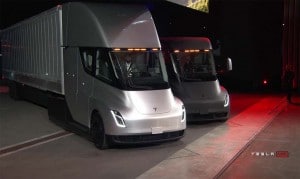
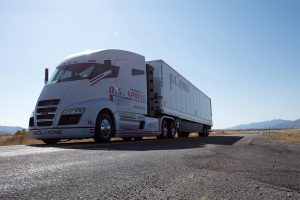
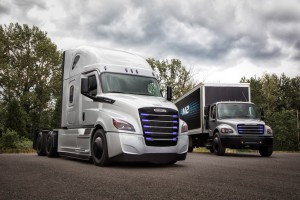
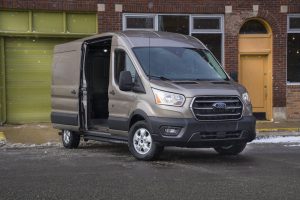
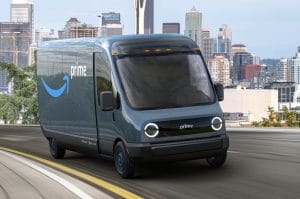















0 Response to "Fifteen States Join Forces to Push for an All-Electric Heavy Truck Fleet - Paul Eisenstein"
Post a Comment